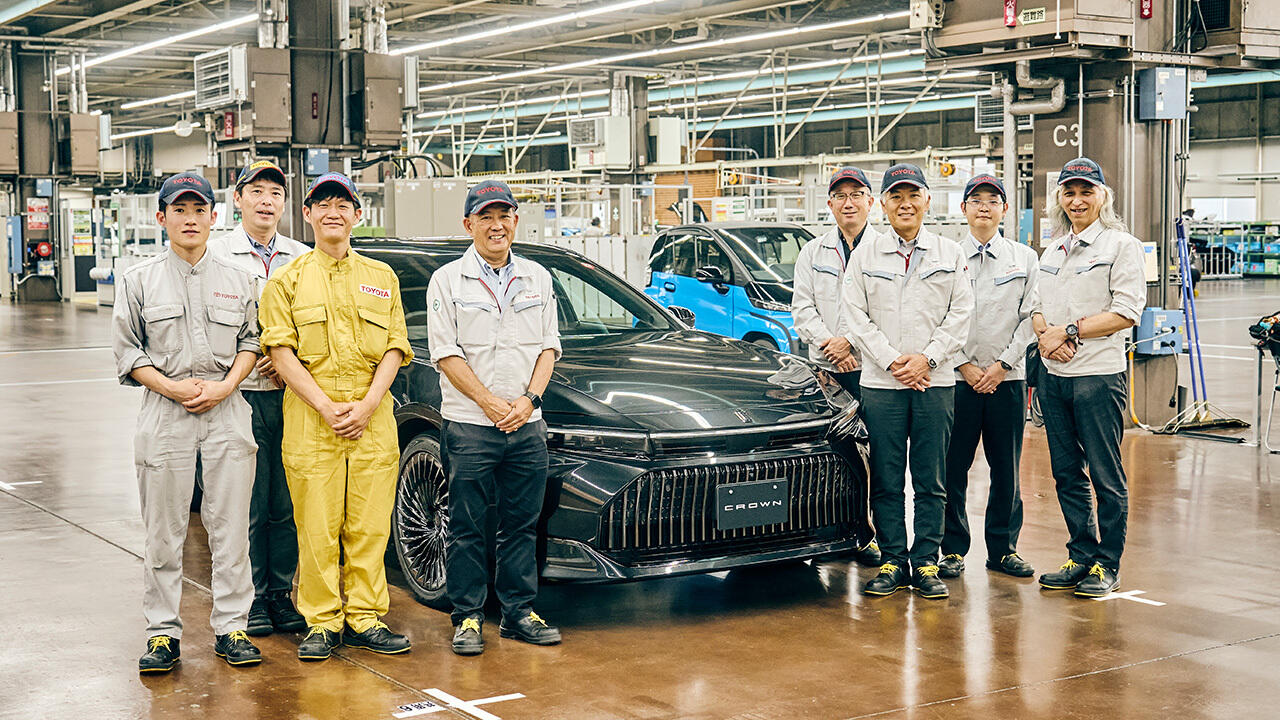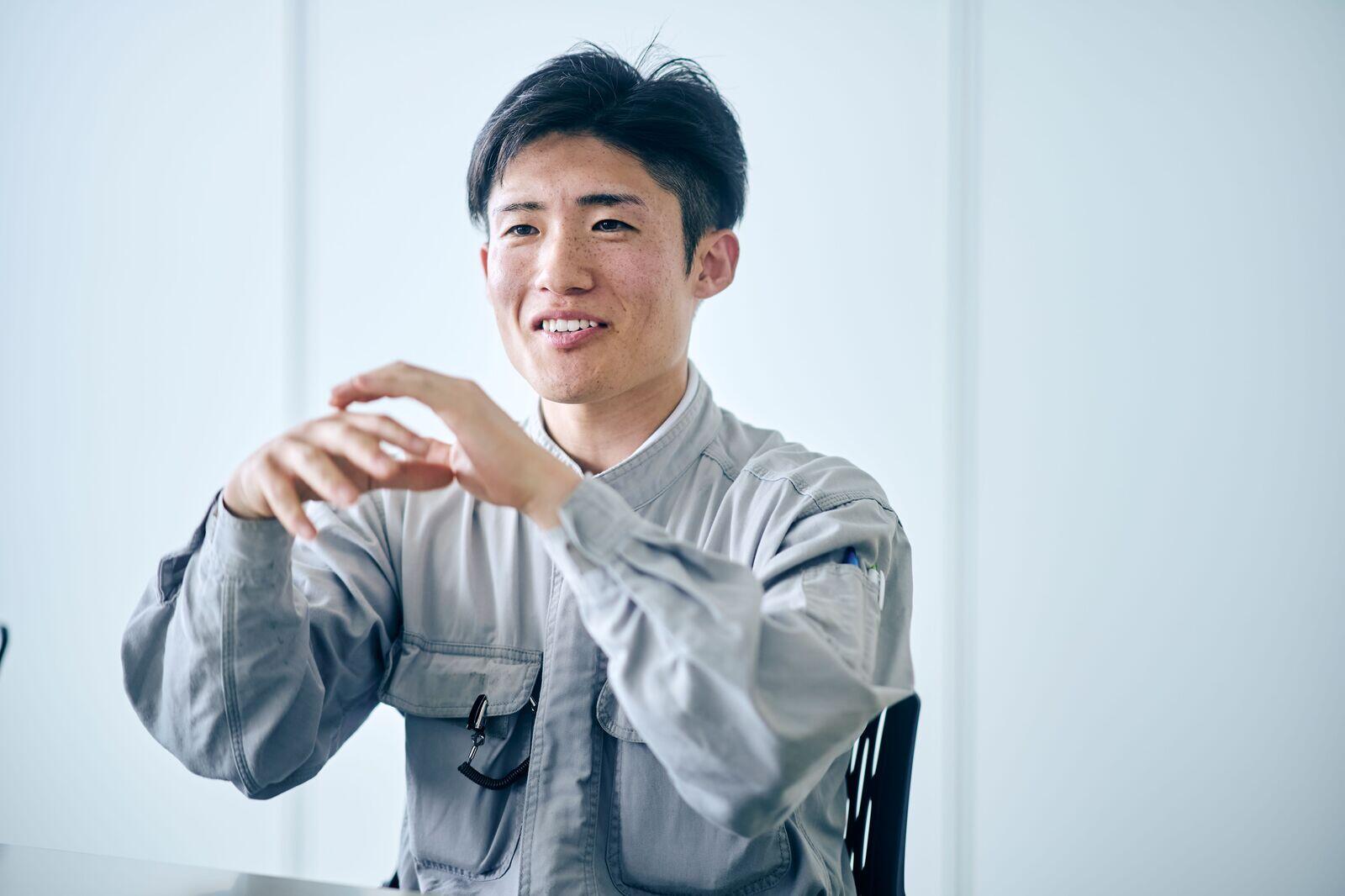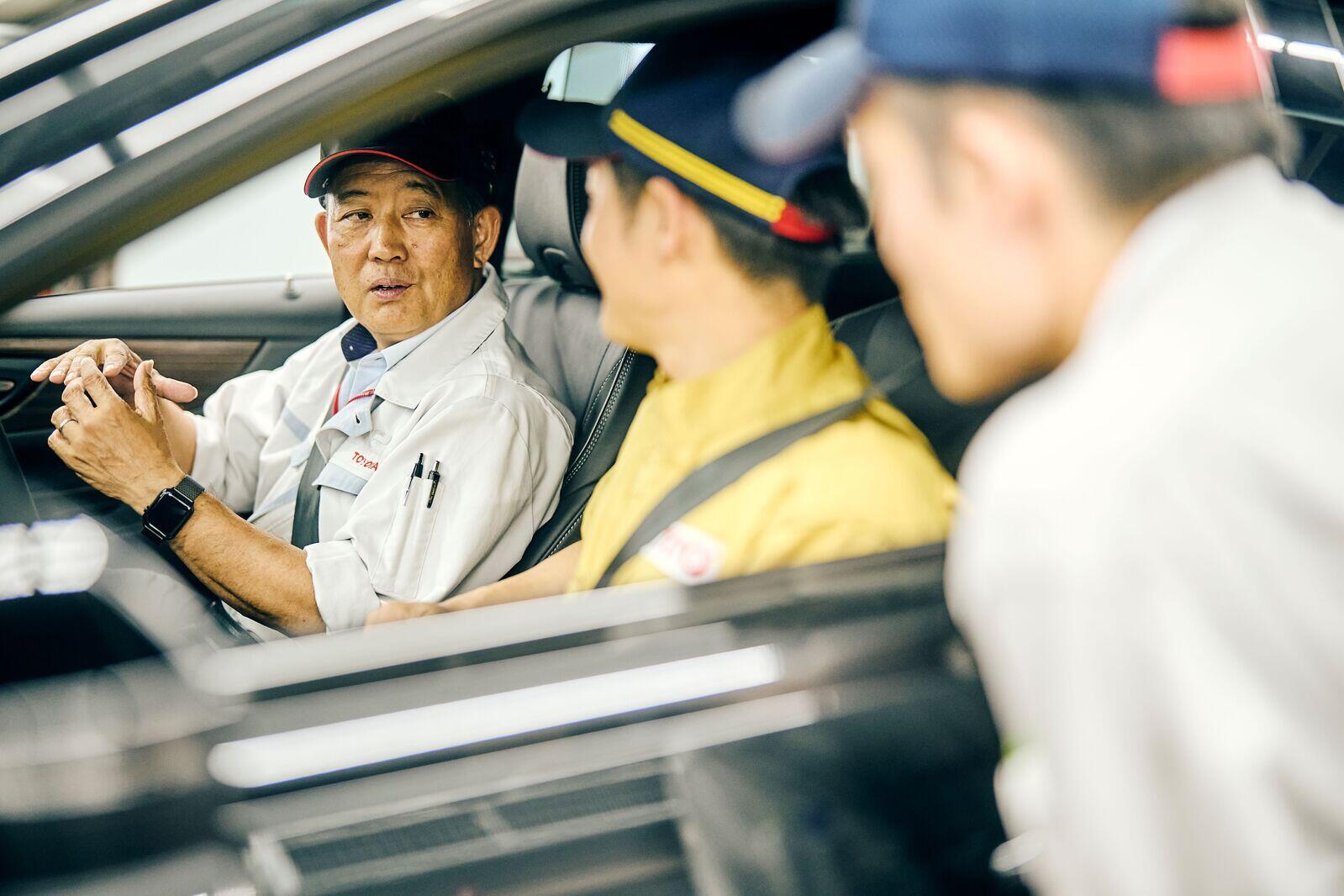
The latest Crown offers four different body variations. This article shines the spotlight on the Sedan's engineers and test drivers, and the driving experience they sought to create.
Group strategy opens new carmaking possibilities
“As Tokuda mentioned, when you reduce damping, maintaining handling stability becomes more difficult. That was another issue,” says Yuto Sagara, also of the Advanced Technical Skills Institute Division. As a test driver, he was involved in developing both the Crossover and Sedan.
Sagara

For models like the Crossover and Sport, DRS (a rear-wheel steering system) allowed us to achieve both a soft driving feel and stability at high speeds.
However, the Crown Sedan is not set up with DRS. As we racked our brains trying to figure out how to maintain handling stability, Hiraki suggested a technology that controls attitude through braking.
Hiraki

This technology was the work of a team doing advanced development for brakes, and right at that time, they were looking for a project to try it out on.
The mechanism curbs rolling by lightly applying the brakes to the inner side of the rear wheels during cornering, producing anti-roll behavior.
The improvement in handling stability naturally benefits the driver, but it also enhances comfort in the rear seats by easing swaying during cornering. It felt like this system was made just for us.
Test driver Katayama was also pleased with the level of ride comfort and handling stability the team had achieved.
Katayama

We set out to develop the Sedan such that, even if the wheels were moving due to input from the road, it would not affect the body above the springs. And I believe that’s precisely the kind of car we created.
This level of commitment to driving comfort was only made possible by having four different body types in the Crown series.
Working with four models allowed Toyota’s engineers to bring out the unique character of each, in a way that could not have happened with a single body type. Developing the cars as a group, rather than single products, caters to the diversifying needs of customers. This “group strategy” is bearing fruit in the form of more attractive offerings.
Next time, we look into the making of the Estate, the final model to appear in the Crown series. Find out how the team achieved a fatigue-free experience behind the wheel, even on long drives.

